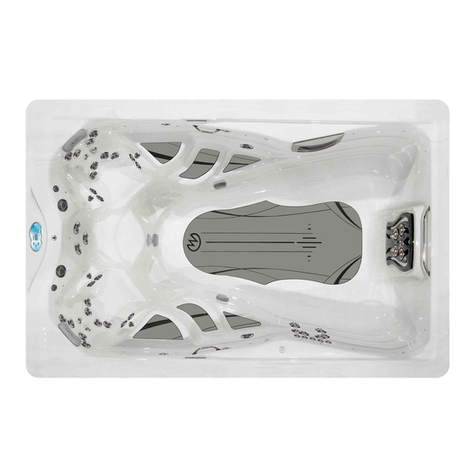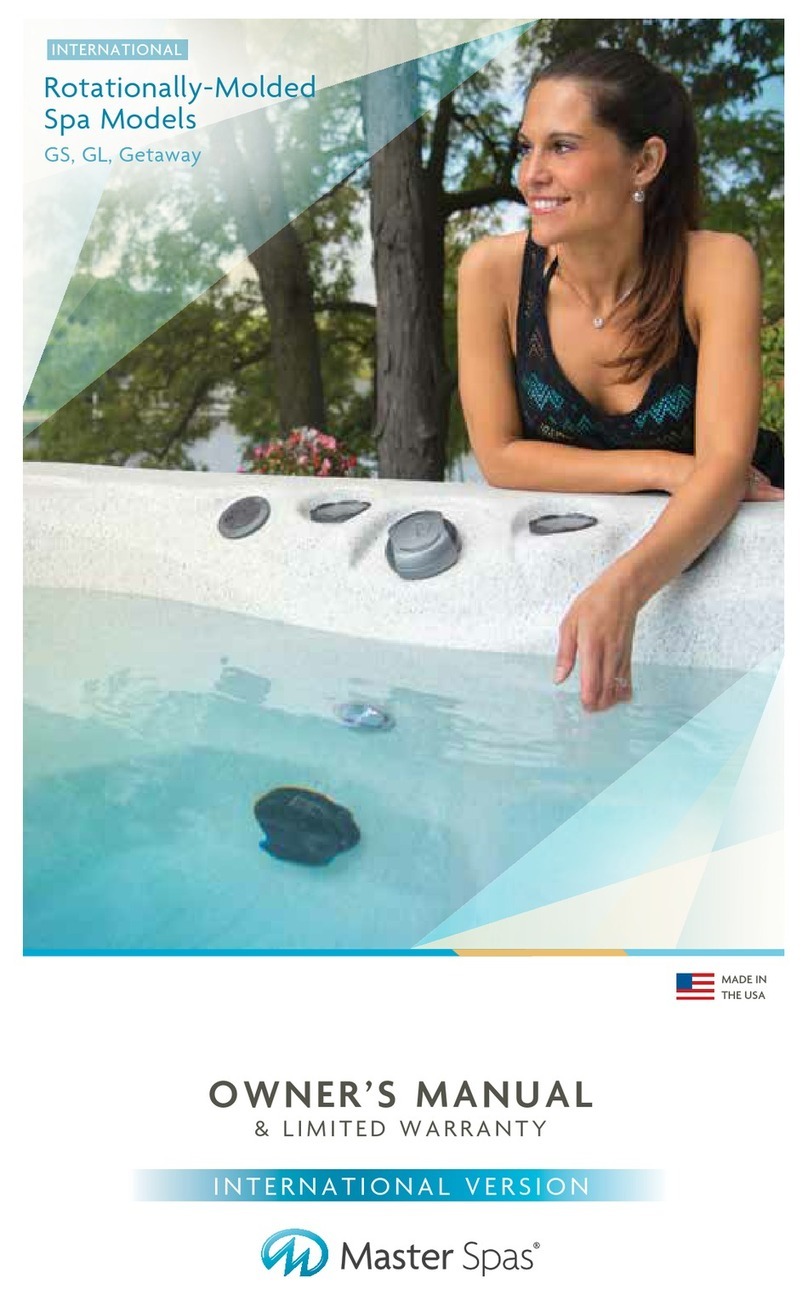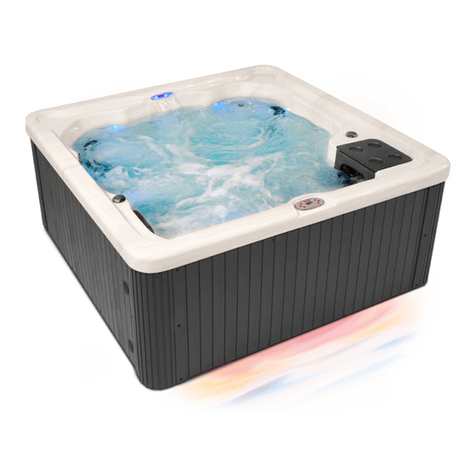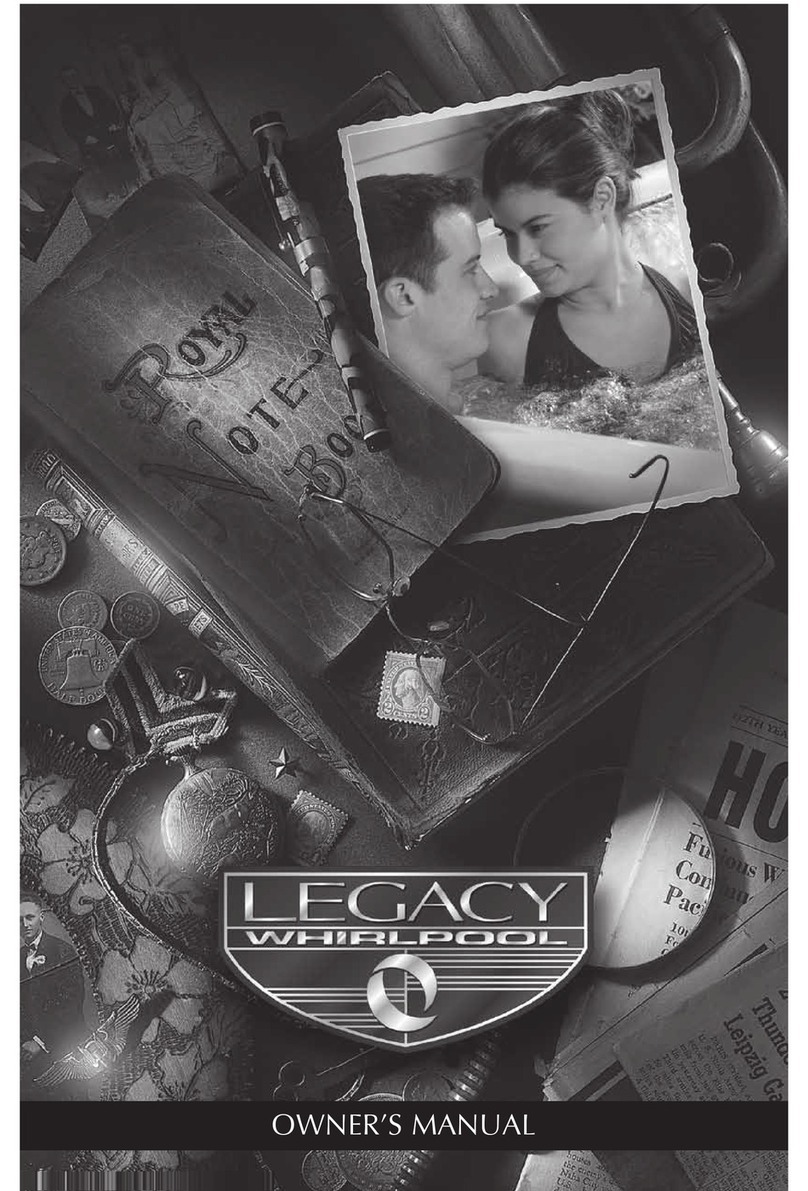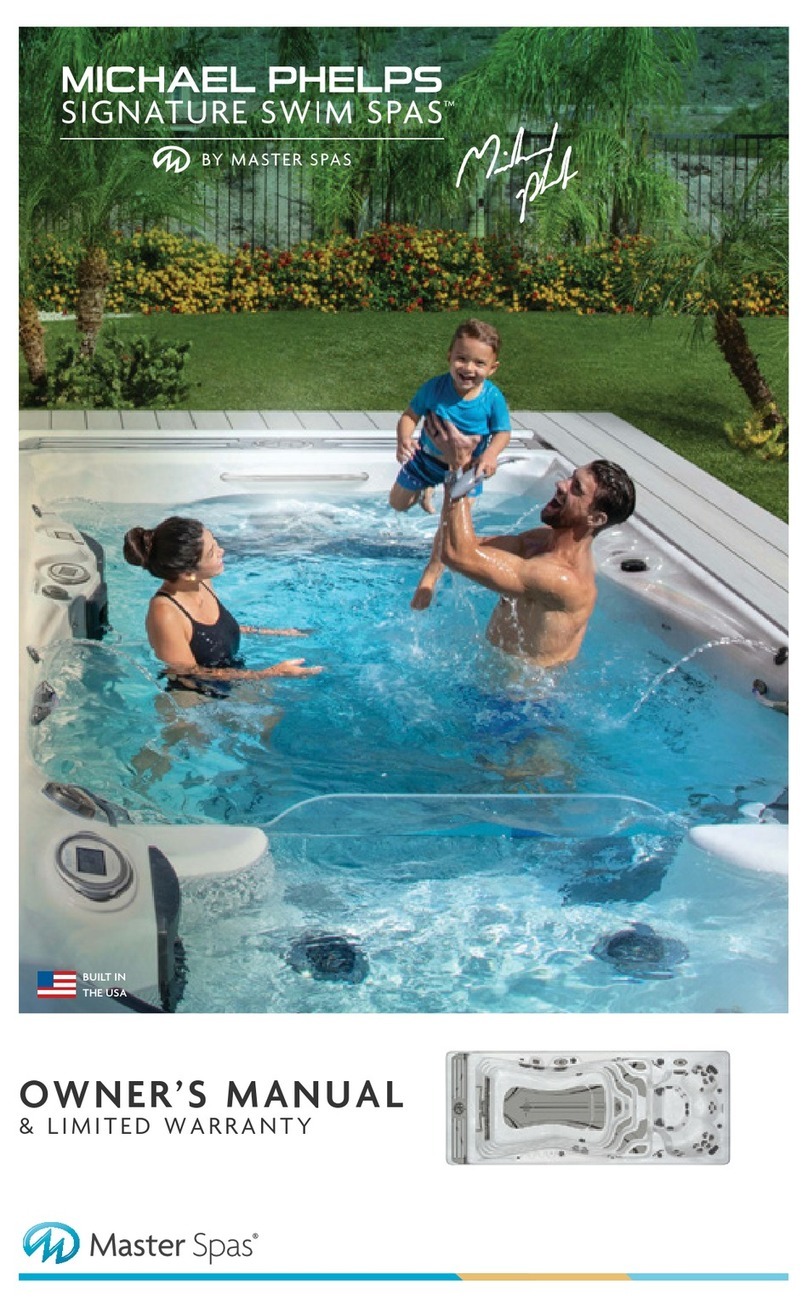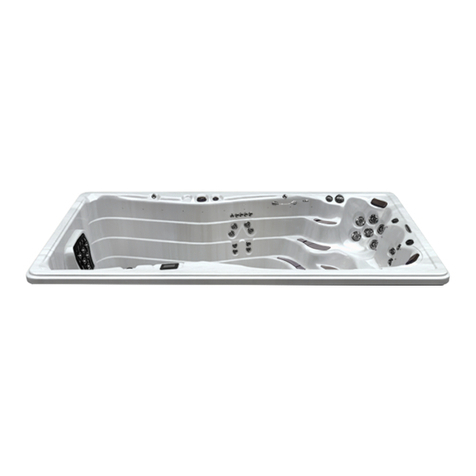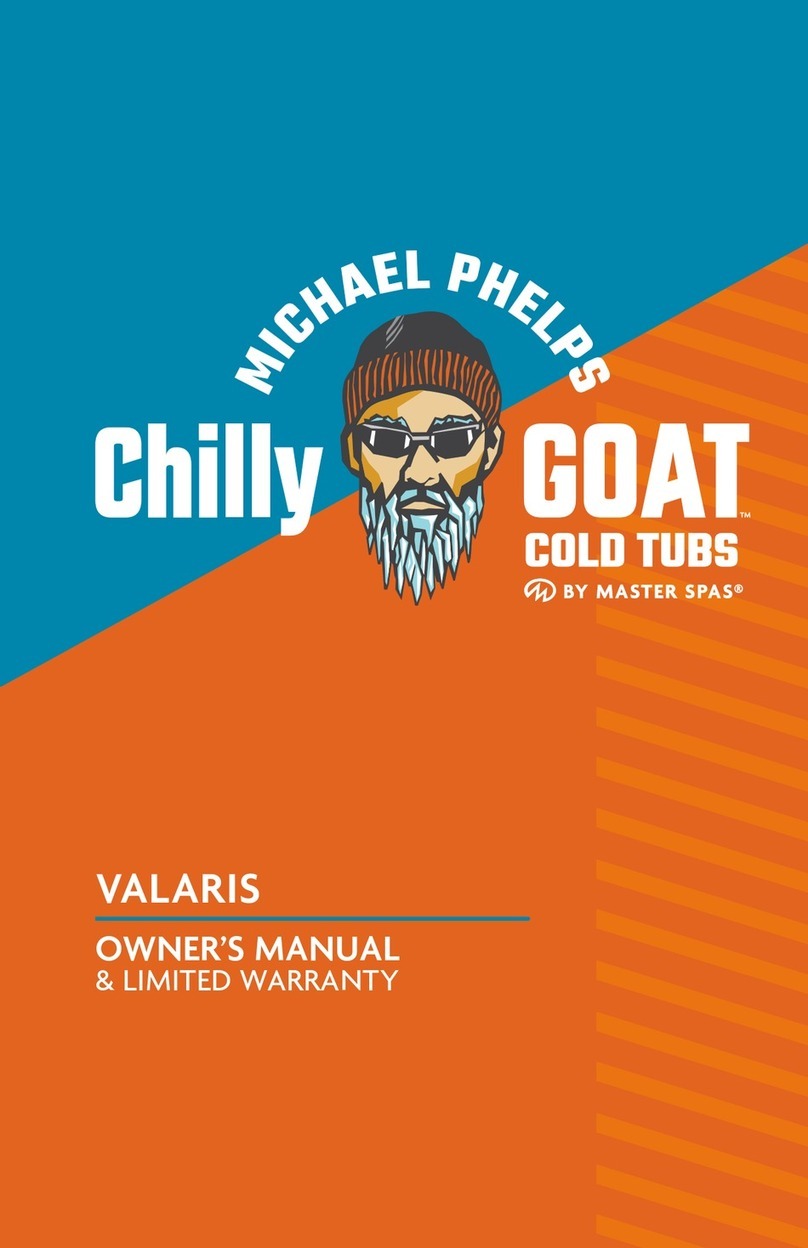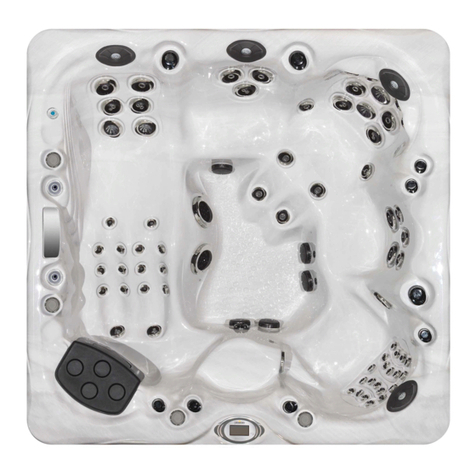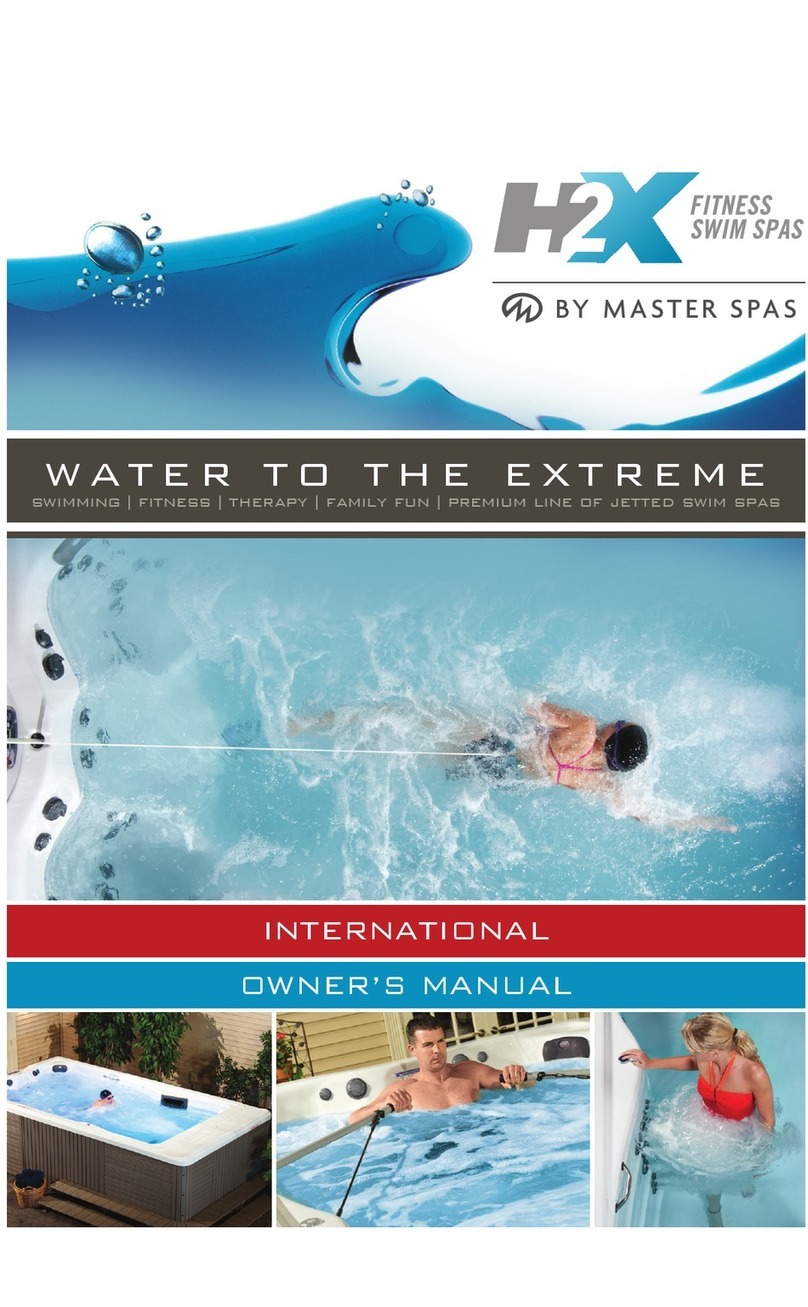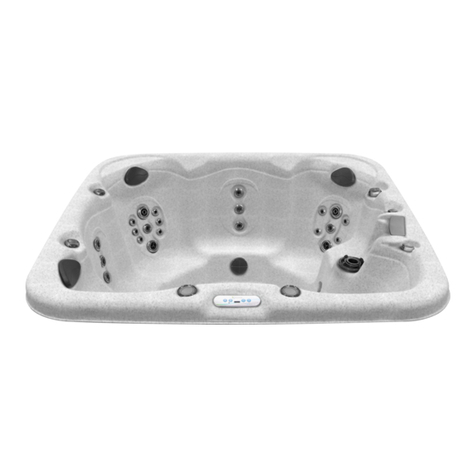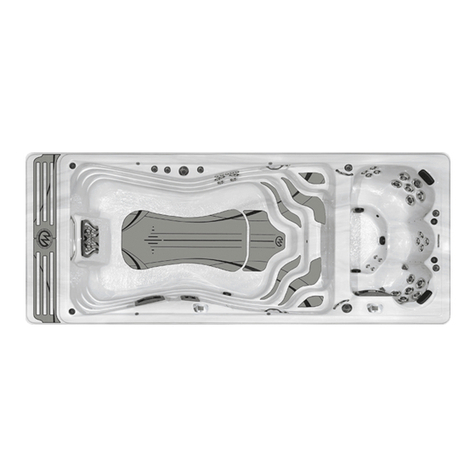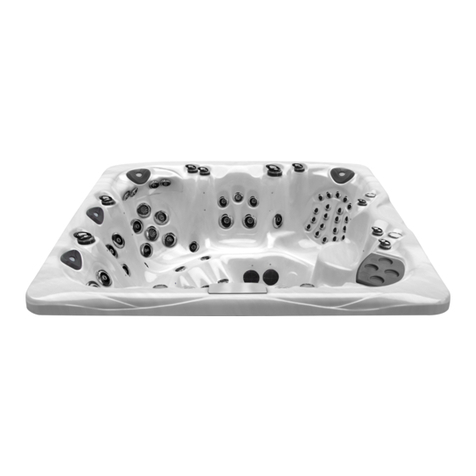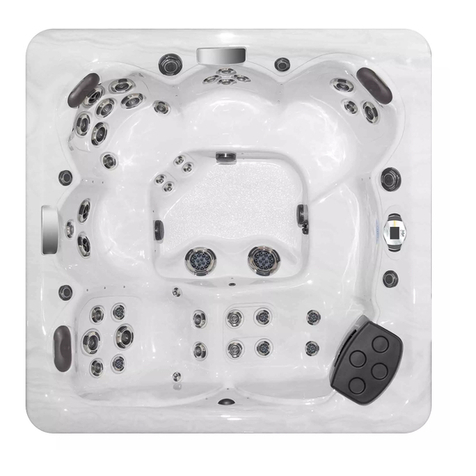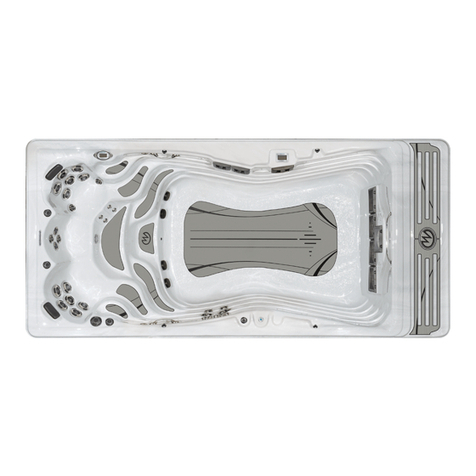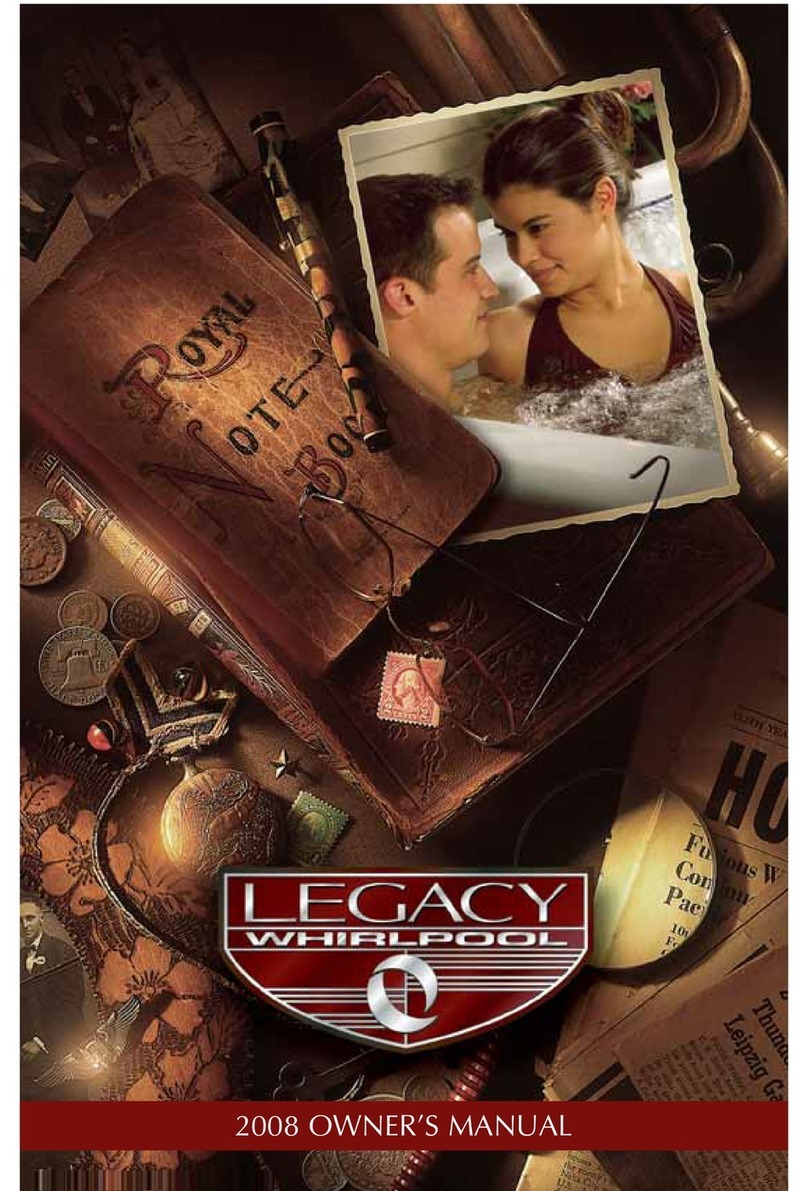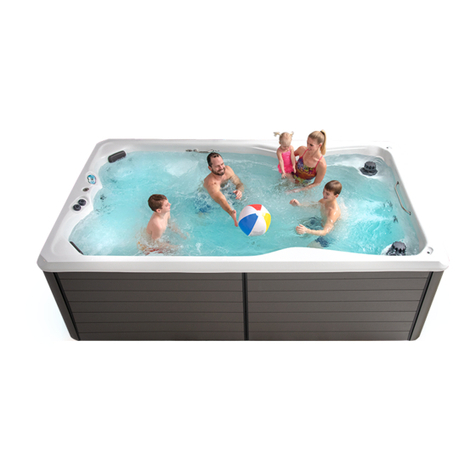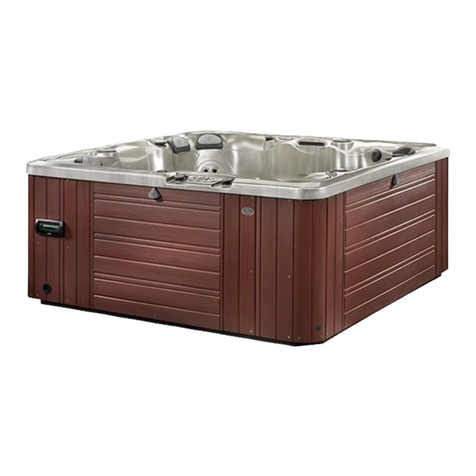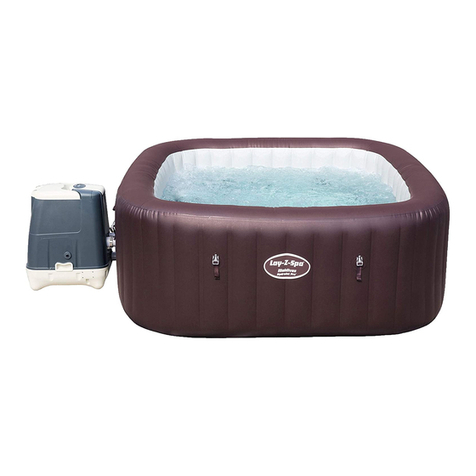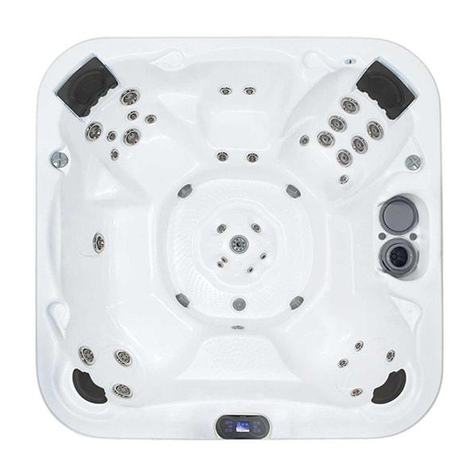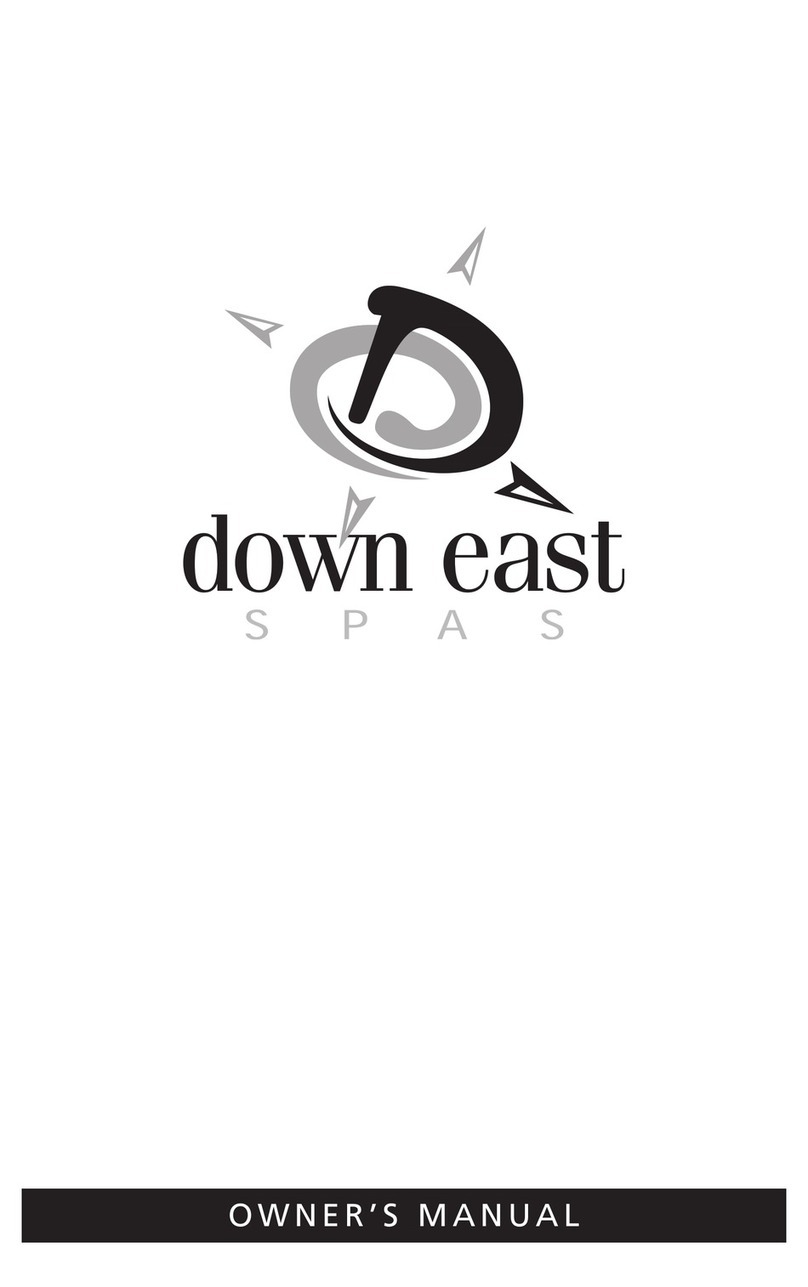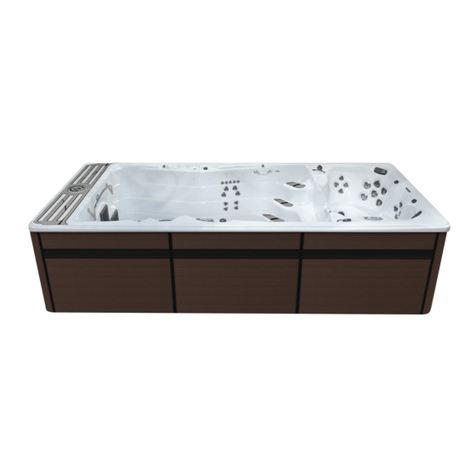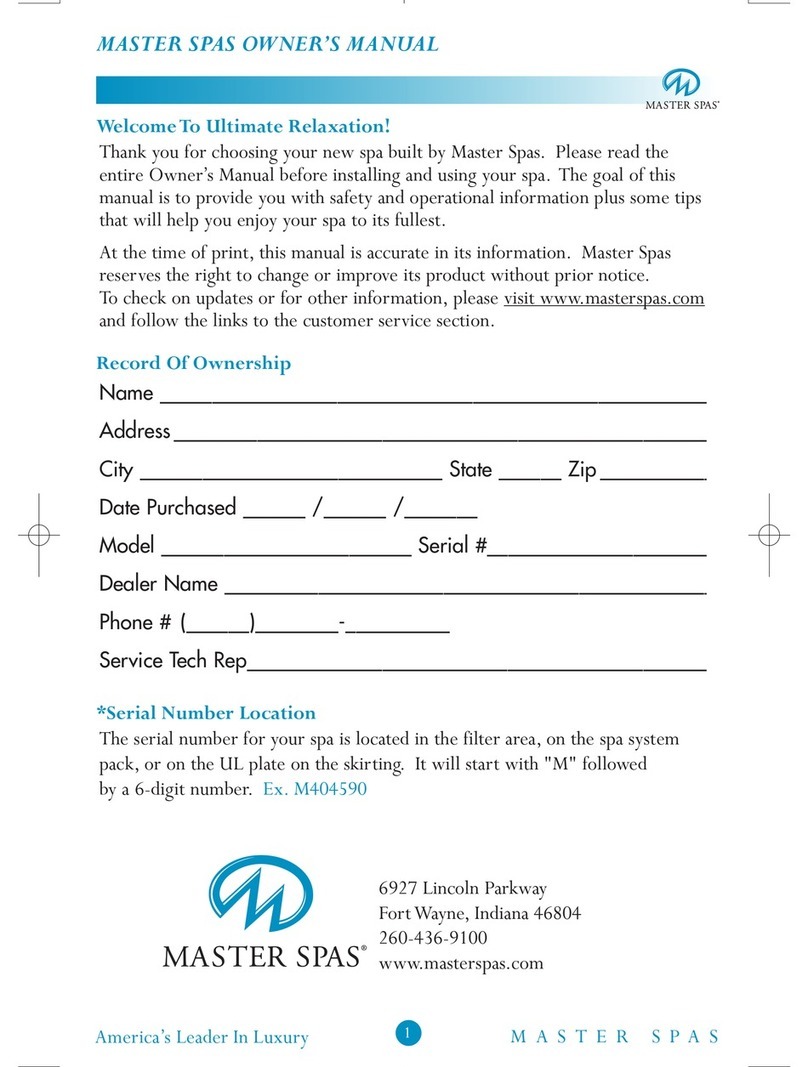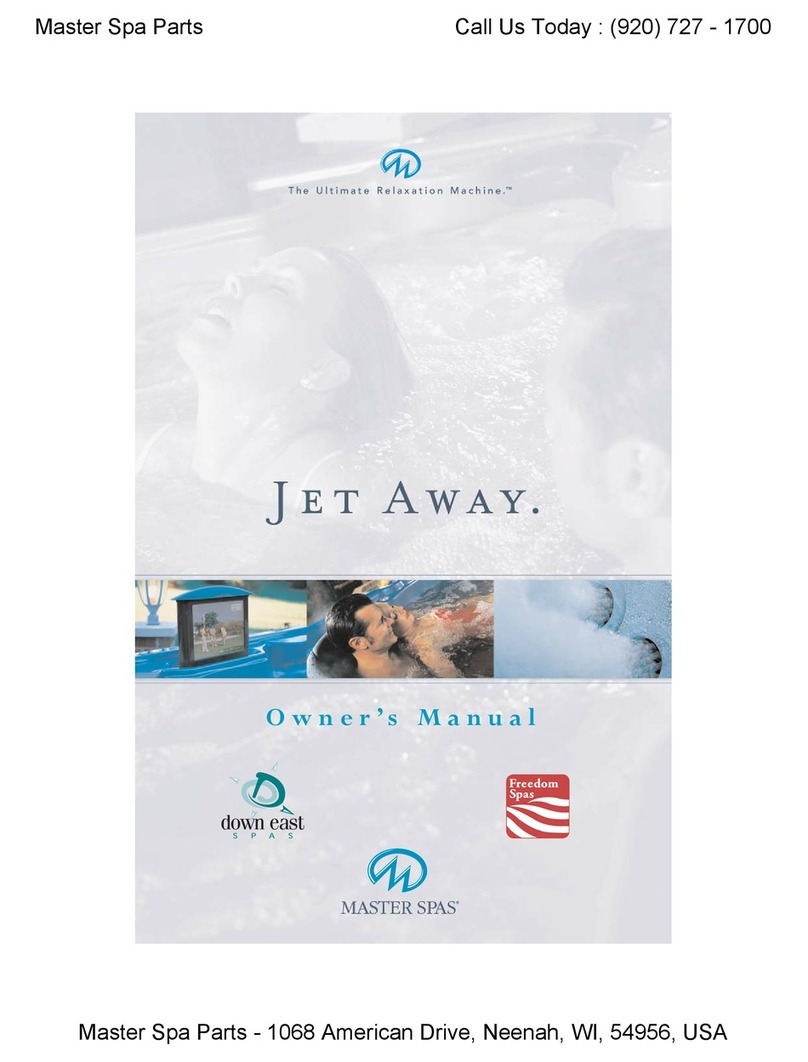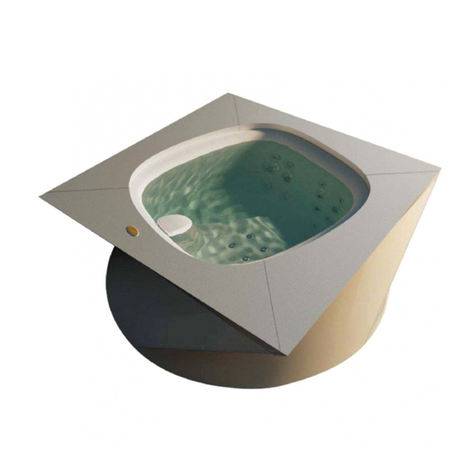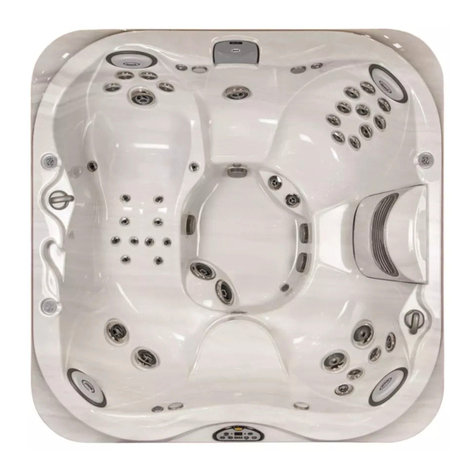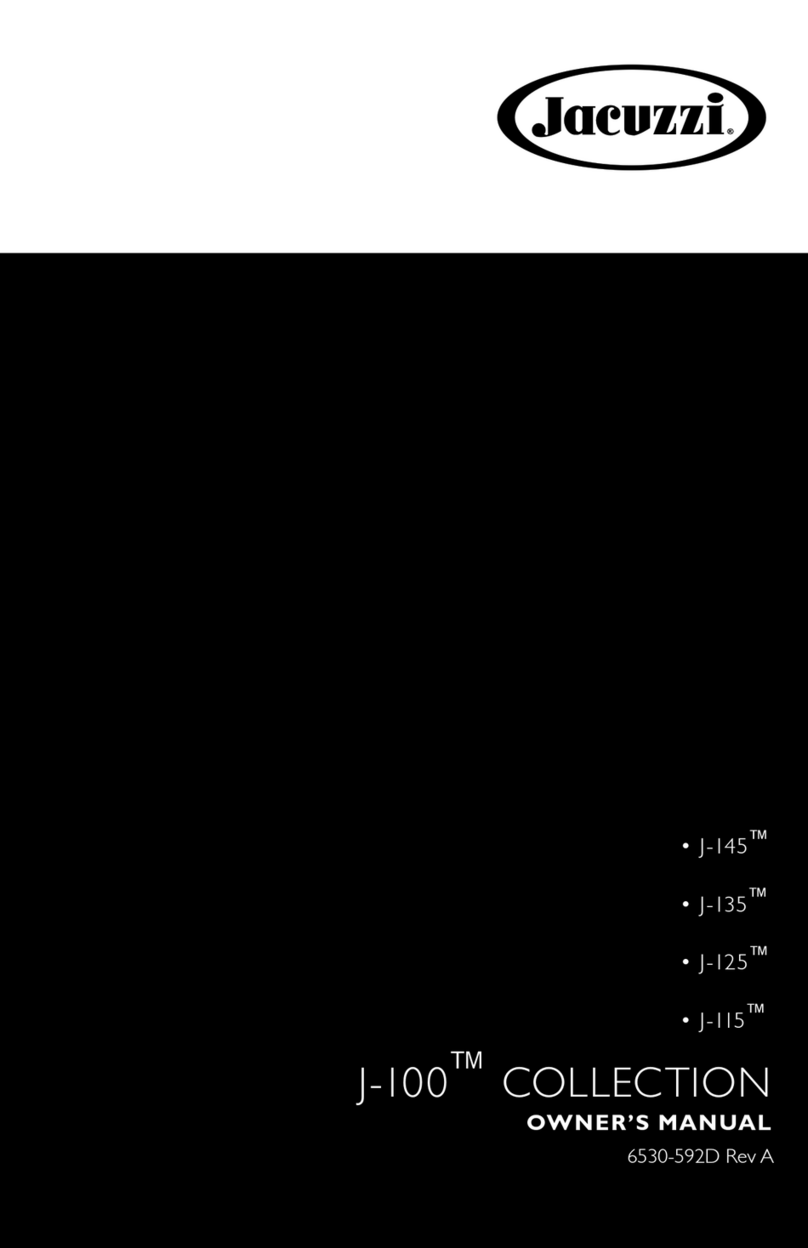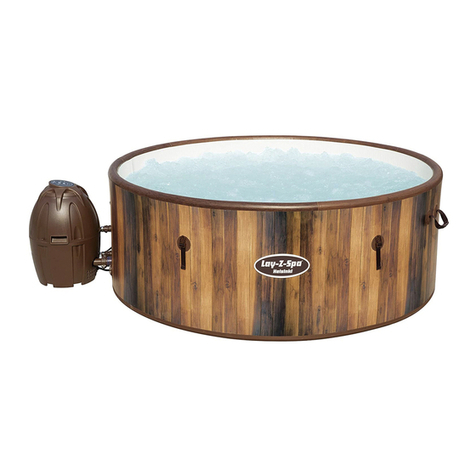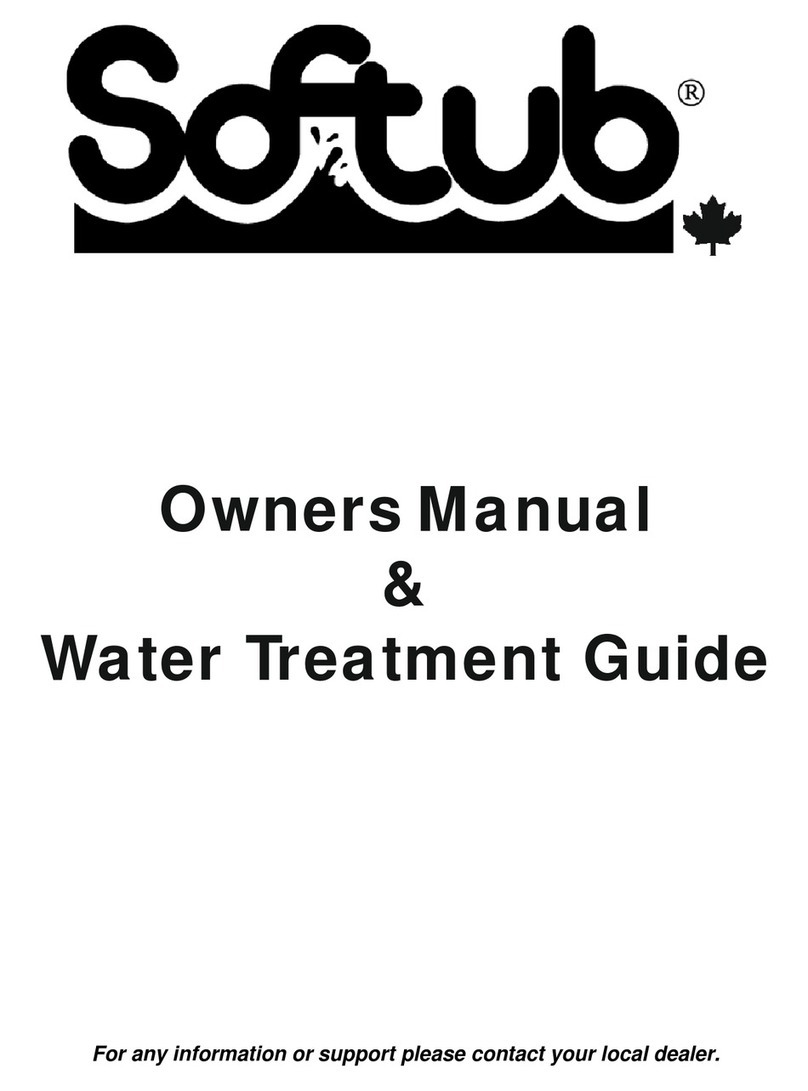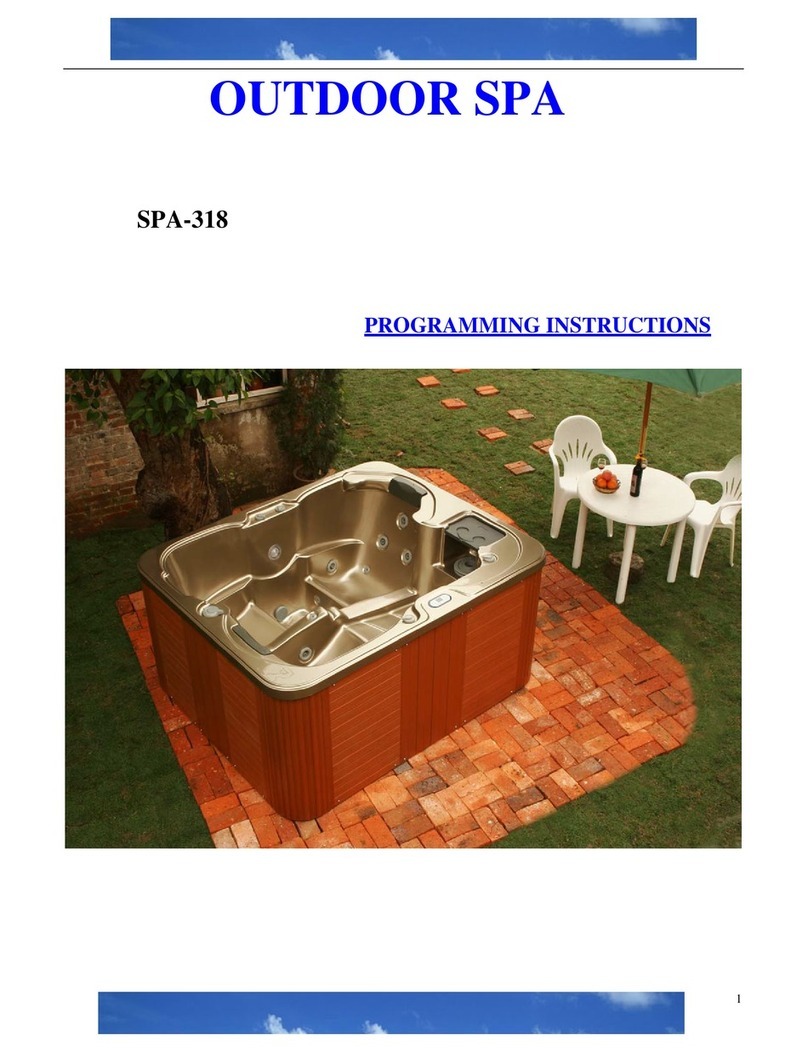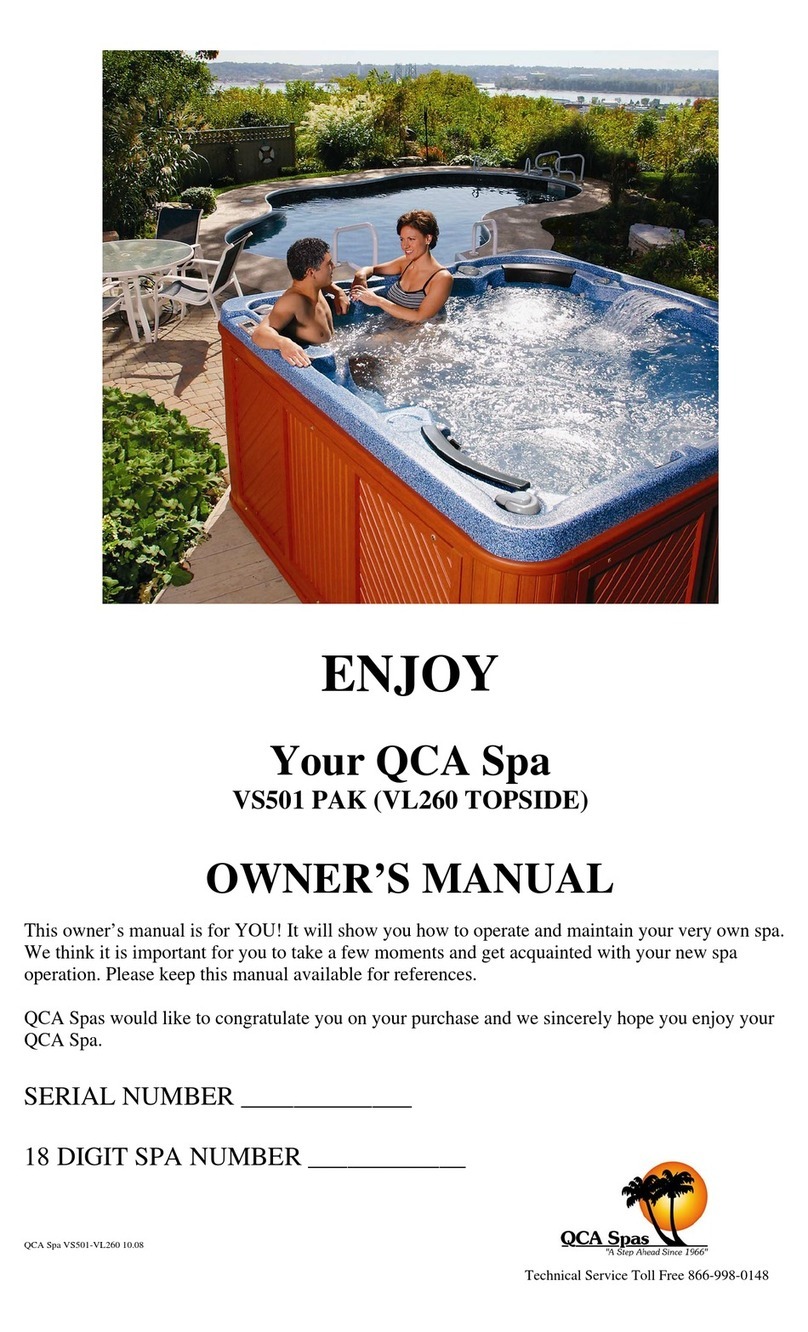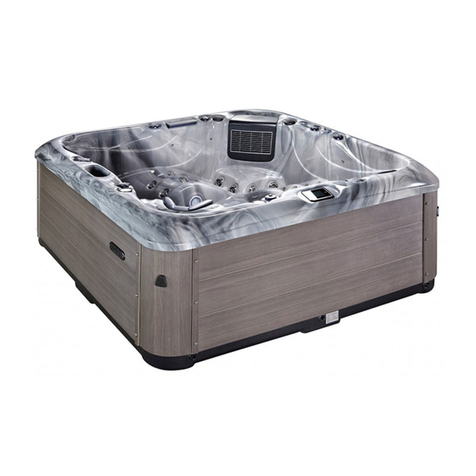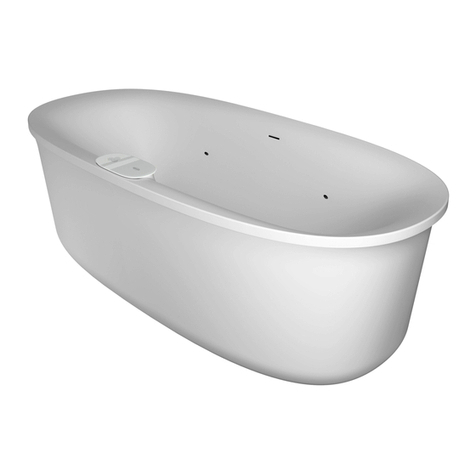
3
SAFETY INSTRUCTIONS CONT.
• Clumsiness
• Drowsiness
• Confusion
• Unconsciousness
• Bright red, cold skin (in infants)
THE EFFECTS OF
HYPOTHERMIA INCLUDE:
• Failure of the nervous system
• Respiratory system and heart
• Failure to recognize the need to exit the
Chilly GOAT™ cold tub
• Unawareness of impending hazard
• Fetal damage in pregnant women
• Physical inability to exit the Chilly GOAT
• Unconsciousness resulting in the danger
of drowning
WARNING: The use of alcohol, drugs, or
medication can greatly increase the risk
of hypothermia.
DANGER: To reduce the risk of injury to
persons, do not remove the suction grate.
Suction through drains and skimmers is
powerful when the jets in the Chilly GOAT are
in use. Damaged covers can be hazardous to
small children and adults with long hair. Should
any part of the body be drawn into these
fittings, turn o the Chilly GOAT immediately.
As a precaution, long hair should not be
allowed to float in the Chilly GOAT.
WARNING: Install the Chilly GOAT so
that water can be easily drained out of
the compartment containing electrical
components so as not to damage equipment.
When installing the Chilly GOAT make sure to
allow for an adequate drainage system to deal
with any overflow water. Please allow for at
least 2’ of clearance around the perimeter of
the Chilly GOAT to provide enough room to
access for servicing. Please keep in mind the
front panel will require more space for proper
ventilation. Please contact the Chilly GOAT
support line for questions or service needs.
WARNING: The Chilly GOAT should be
covered with an approved locking cover when
not in use, to prevent unauthorized entry
and injuries.
WARNING: People with infections, sores or
the like should not use the Chilly GOAT. Warm
and hot water temperatures may allow the
growth of infectious bacteria if not properly
disinfected.
CAUTION: Safe temperatures for swimming or
aquatic exercise is around 80F (26C).
CAUTION: Replace components only with
identical components.
WARNING: Risk of Electric Shock. Do not
connect any auxiliary components (for
example, additional speakers, headphones,
additional audio/video components etc.) to
the system. These units are not provided with
an outdoor antenna.
Unless you are qualified and knowledgeable
to work with the electrical products and its
components, do not service this product
yourself. Opening or removing covers may
expose you to dangerous voltage or other
hazards. If you are not experienced with
home power, wiring, electrical components
and troubleshooting; contact a qualified
service technician. If the power supply cord(s)
are damaged, water is entering the speaker,
audio compartment, or any other component
in the electrical equipment compartment
area, the protective shield is showing signs
of deterioration, or there are signs of other
potentially hazardous damage to the unit, turn
o the circuit breaker from the wall and refer
servicing to qualified personnel.
The unit should be subjected to periodic
routine maintenance once every quarter to
make sure that it is operating properly.
DANGER: Risk of Electric Shock. A green
colored terminal or a terminal marked G, GR,
Ground, Grounding or the symbol shown
in Figure 14.1 of UL 1563 is located inside the
supply terminal box or compartment. To
reduce the risk of electric shock, this terminal
must be connected to the grounding means
provided in the electric supply service panel
with a continuous copper wire equivalent in
size to the specifications called out in the latest
version of the National Electrical Code, or your
local authority having jurisdiction.
At least two lugs marked “Bonding Lugs”
are provided on the external surface or on
the inside of the supply terminal box or
compartment. To reduce the risk of electric
shock, connect the local common bonding
grid in the area of the Chilly GOAT™ to these
terminals with an insulated or bare copper
conductor not smaller than 10AWG.
